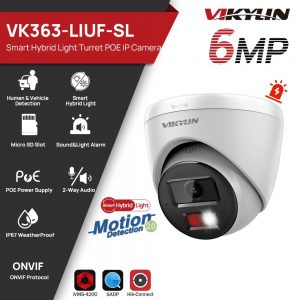
Wireless security cameras are closed-circuit television cameras that transmit video and audio signals to a wireless receiver using radio frequency bands. Many wireless home security cameras require at least one cable or wire for power; “wireless” refers to the transmission of video/audio. However, some wireless surveillance cameras are powered by batteries, making the cameras truly wireless.
Due to their low installation costs (no need for expensive video extension cables) and flexible installation options, wireless cameras are very popular among modern security users. Wireless cameras can be installed/mounted in locations that could not be used for standard wired cameras before. In addition to ease of use and accessibility, wireless security cameras allow users to take advantage of broadband wireless internet to provide seamless video streaming on the internet.
Types of Wireless Security Camera:
(I) Analog Wireless Camera
Analog wireless transmits audio and video signals using radio frequencies. Typically, analog wireless has a transmission range of approximately 300 feet (91 meters) in open spaces; walls, doors, and furniture will reduce this range.
Analog wireless has three frequency bands: 900 MHz, 2.4 GHz, and 5.8 GHz. Currently, most wireless security cameras operate on the 2.4 GHz frequency. Most home routers, cordless phones, video game controllers, and microwaves operate at the 2.4 GHz frequency and may interfere with wireless security cameras. 900 MHz is known as a WiFi friendly frequency band because it does not interfere with wireless network internet signals.
Pros:
① Low cost
② Multiple receivers for each camera: any receiver can receive signals from one camera; you can have multiple receivers in multiple locations to create your wireless monitoring network.
Cons:
① Susceptible to interference from other household devices such as microwaves, cordless phones, video game controllers, and routers.
② No signal strength indicator: there are no lights indicating the strength of the signal.
③ Easy to intercept: because analog wireless uses a consistent frequency, the signal may be picked up by other receivers.
④ Limited to one-way communication: receivers cannot send signals back to the camera.
(II) Digital Wireless Security Cameras
Digital wireless encodes audio and video analog signals into digital packets and transmits them as high-bandwidth radio frequencies.
Pros:
① Wide transmission range usually close to 150 meters (in open spaces with clear line of sight between camera and receiver).
② High-quality video and audio
③ Two-way communication between camera and receiver
④ Digital signals mean you can transmit commands and features such as turning lights on and off.
⑤ You can connect multiple receivers to one hard drive recorder.
Cons:
①High cost
②Transmission range is affected by obstacles such as walls and furniture, which may decrease signal quality.
③Requires more power supply.
(III) Network Security Cameras
Network cameras use the internet or a local area network (LAN) to transmit video and audio signals for remote viewing and control. They are typically programmable and can be accessed and operated remotely via a computer or smartphone. Network cameras require an Internet connection and can use either wireless or wired connections.
Pros:
① Remote access and control: you can access your camera from anywhere using the internet.
② Can be programmed for various functions
③ High-quality video and audio
④ Easy to integrate with other security systems
⑤ Can be used for multiple purposes, including video conferencing and remote monitoring.
Cons:
① Requires an Internet connection
② May experience lag or delays in video streaming
③ Higher cost compared to analog wireless cameras
④ May require technical expertise for installation and setup.





